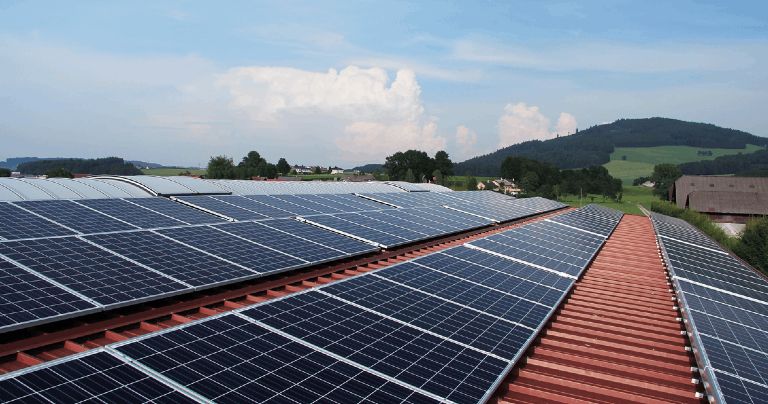Advancements in solar project maintenance
By EPR Magazine Editorial August 31, 2021 1:38 pm
By EPR Magazine Editorial August 31, 2021 1:38 pm

With solar power generation gaining traction in India, regular maintenance of the system and components will play a major role for the upkeep of the solar power units intact.
As of April 2021, India’s solar power capacity has crossed 40 GW and is aiming at 280 GW in 2030, which require India to install 25 GW capacity every year in 10 years. This indicates a growing requirement of regular maintenance of solar PVs and units in future.
Solar: shining brighter
In the current market scenario, solar energy plays a very significant role in providing electricity in both rural and urban areas. As sunlight is abundantly available in the country, a portion of this can meet the entire country’s power requirement. According to Chiranjeev Saluja, Managing Director, Premier Energies, India has been increasingly focusing on solar power for the future electricity needs of the country.
India has seen an exponential growth in solar power capacity over the past decade on the back of reduction in capital costs, increased demand for solar installation and favourable government policies, according to Mahesh Makhija, Director – Business Development & Commercial (Renewables), CLP India. The solar industry gained further momentum with the government increasing India’s solar capacity target to 280 GW by the year 2030. The industry is highly competitive and witnessing the entry of more and more foreign and domestic players. “We have witnessed rapid technological innovation in project development and management in the past 4-5 years. Solar PV modules and panels continue to become more efficient due to improvements in solar cell technology,” says Mahesh.
Maintenance practices
Regular maintenance of solar projects and components has become increasingly important these days as more solar projects are coming up. As Mahesh observes, “Asset management has changed for the better with the use of robotic cleaning and analytics and trackers that improve operational efficiencies.”
According to him, the preventive and corrective maintenance of the solar assets is done during non-generating hours. Breakdown maintenance, of course, is done immediately. Mahesh explains the methods adopted by the company for asset maintenance, “These maintenance activities are carried out under CLP India’s supervision by third-party maintenance contractors or by OEMs during the warranty period. We have well-defined maintenance systems and procedures for each equipment based on the OEM’s recommendations and our own experience. An annual health check is performed (Flash test and Electro luminous as per the IS14286/IEC 61215) on the PV modules to compare the performance of the modules at standard conditions in comparison to the rated power of the modules. We also conduct 100 percent drone thermography to identify defects at the cell and module level, or any electrical interconnection issues that might exist. Additionally, a manual inspection is carried out every month to check the physical condition of the modules. For Balance of Plant (BoP) equipment, we have various maintenance plans in place, which are followed at a predefined frequency. For example, we carry out annual preventive maintenance for our inverters, while the greasing of trackers is done once every two years. For all LV and HV equipment like power transformers, switch gear, SF6 circuit breakers, and 220 kV switch yard parts, we conduct maintenance and electrical testing on an annual basis.”
According to Chiranjeev, solar power systems are durable and requires very less maintenance over their lifespan which is about 25-30 years. He adds on the key maintenance activities involved in solar PVs which include:
For a long-lasting PV system, it is very important to constantly monitor the system. As the electrical cabinets are outdoors, there are various environmental factors like bad weather, sunlight, rainfall, etc., that can affect the system. Hence, it is vital to monitor them regularly as they are exposed to climate changes, according to Chiranjeev, Some of the tips to maintain rooftop solar power plants are:
Market outlook
According to Mahesh, the outlook for India’s solar industry continues to be positive despite the disruptions caused by the pandemic. He adds, “Solar energy will be a key element of CLP India’s future portfolio. We will focus on utility projects as well as application-based projects (such as data center, storage, e-mobility, etc).” According to him,CLP Indiais actively looking at commercial-scale greenfield solar power project development through participation in Central or state government tenders, as well as direct power sale to industrial consumers under suitable arrangements. It is also actively pursuing acquisition opportunities in the market.
“Financing for solar projects is now available at very competitive rates. The entry of several new companies into the market will enhance India’s capacity for equipment like manufacturing solar modules, module mounting structures, solar power packs, generators and inverters. Adoption of technologies will bring down costs further, making solar power the main source of power for the country. This, in turn, will have a positive impact on the environment and help in mitigating climate change,” Mahesh concludes on a positive note.
—
“Asset management has changed for the better with the use of robotic cleaning and analytics and trackers that improve operational efficiencies.” – Mahesh Makhija, Director – Business Development & Commercial (Renewables), CLP India.
“It is vital to monitor the electrical cabinets and outdoor components regularly as they are exposed to climate changes.” – Chiranjeev Saluja, Managing Director, Premier Energies, India.
We use cookies to personalize your experience. By continuing to visit this website you agree to our Terms & Conditions, Privacy Policy and Cookie Policy.